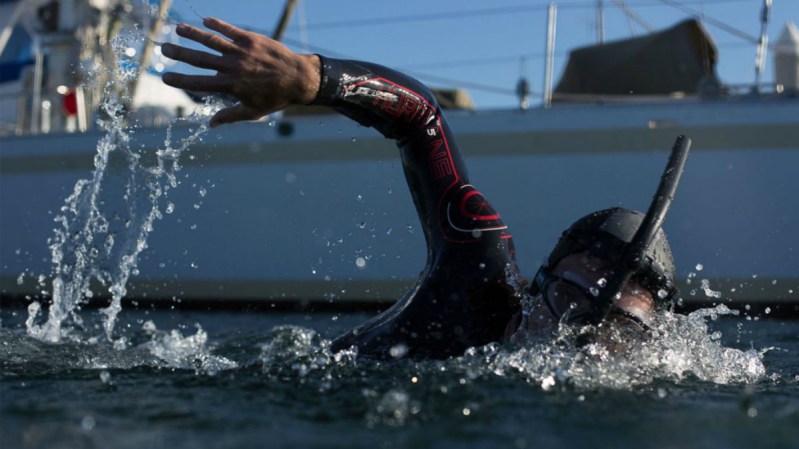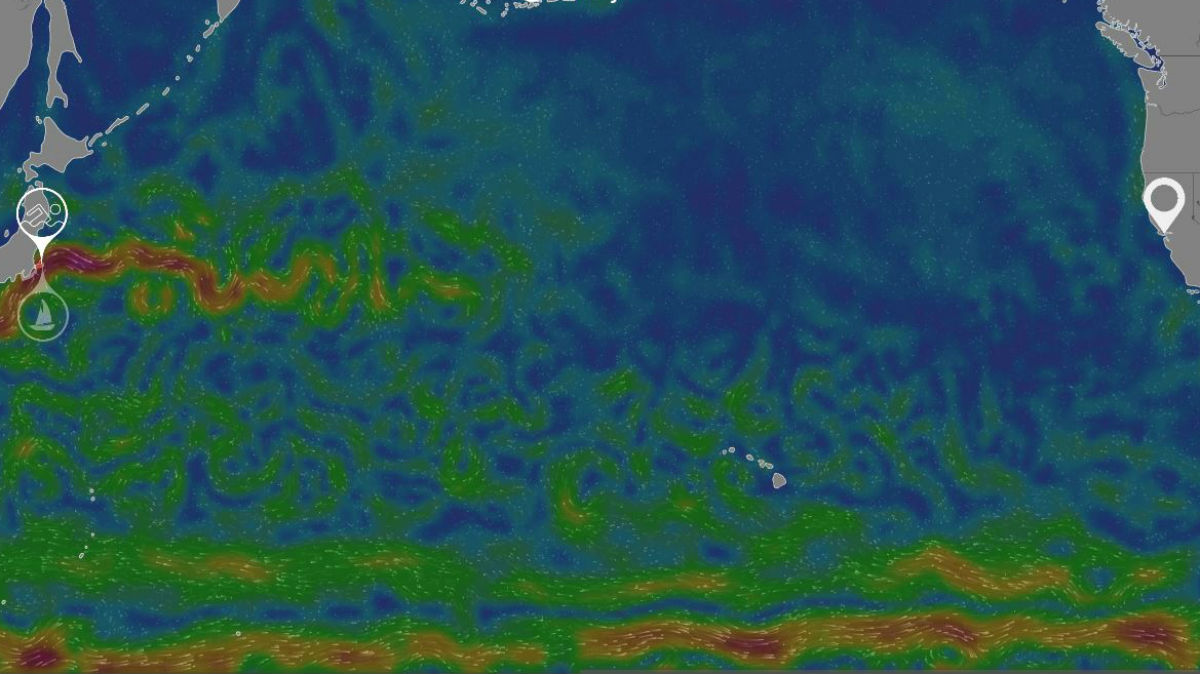
“Because it is there.”
It was George Leigh Mallory’s reason for climbing Mount Everest and, for many adventurers, it seems as good a reason as any to push the limits of human endurance. Now, one man has his sights set on another human first: swimming the entire Pacific Ocean from Japan to San Francisco.

On June 5, 2018, armed with only a wetsuit, snorkel, and fins, Ben Lecomte set off from the shores of Tokyo, Japan. His journey across the Pacific Ocean will cover more than 5,500 miles (9,000 kilometers). In addition to some of the roughest seas in the world, the 51-year-old Frenchman will be exposed to sharks, stinging jellyfish, and acres of plastic pollutants. His goal is to spend eight hours a day in the water. With the help of the strong Pacific currents, he’s expecting to cover up to 30 miles every 24 hours. At that pace, he’ll burn up to 8,000 calories.

A GPS-enabled, 67-foot support sailboat will provide food, shelter, and a place to rest, but he’ll begin each new day exactly where he left the water. If the epic journey goes as planned, Lecomte will arrive on the coast of San Francisco sometime in December — a full six months later.
Lecomte is no stranger to record-setting swims. In 1998, he drew worldwide attention for crossing the 4,000-mile width of the Atlantic Ocean in an incredible 73 days. Twenty years later, he’s determined to conquer this larger and seemingly impossible project in the name of adventure and environmental awareness. With the help of his team, he’ll be conducting numerous scientific experiments and hosting pollution-centric experiences along the way.

Some extreme adventurers look to push the boundaries of human endurance by rock climbing, BASE jumping, mountaineering, or deep-sea diving. For others, it’s about the pure, unadulterated motion of swimming. Diana Nyad made history in 2013 when she swam the full 103-mile stretch from Cuba to The Florida Keys without a protective cage. She suffered hundreds (perhaps thousands) of jellyfish stings, horrific sea conditions, paralyzing asthma attacks, and spent days vomiting due to the excess saltwater in her system. Conquering the channel took five attempts over the course of 30 years, and she vowed her latest effort would be her last. In the end, she succeeded. With perseverance and a little luck, so too will Ben Lecomte.
You can track Ben’s progress in real-time, on his website, as well as check out full-length daily updates in his logbook.



